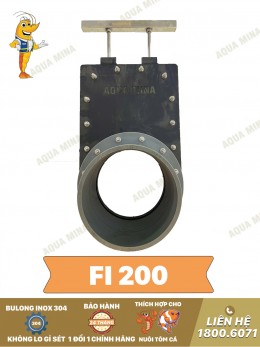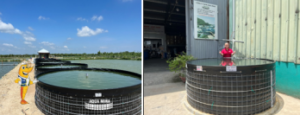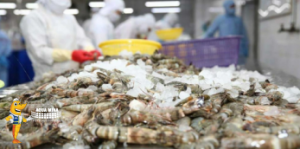How to Increase the Appetite of Whiteleg Shrimp
The first sign of shrimp not eating is reduced activity in the pond. Shrimp that are not fed enough are less active and sluggish. They may move more slowly or lack enthusiasm in searching for food.
Weight Loss:
If shrimp are not getting adequate nutrition, they may experience significant weight loss. You might notice reduced body size or a loss of body mass when checking the average body weight (ABW) of poorly fed shrimp.
.png)
Ignoring Food:
Shrimp with a lack of appetite may show no interest in the food provided. They may ignore the food they usually consume eagerly, leaving more uneaten feed on the water’s surface.
Empty Intestines:
Another sign that shrimp are not eating is their intestines appearing empty. Empty intestines indicate that no food is entering the shrimp’s body for digestion.
Causes of Reduced Appetite in Shrimp
The shrimp's reduced appetite can be attributed to several factors, including:
Poor Pond Water Quality:
Poor pond water quality can decrease the shrimp's appetite as they feel uncomfortable in a poor environment, causing them to reject food. Additionally, poor water quality can stress the shrimp and slow down their metabolism, making them more susceptible to disease. Therefore, it’s crucial for farmers to regularly change the water and ensure water quality parameters are always at optimal levels.
.png)
Shrimp Stress:
Stressed shrimp often lose their appetite, with stress primarily caused by sudden and strong changes in environmental conditions. To prevent stress, farmers should monitor water quality parameters closely and maintain a safe and stable environment.
Extreme Weather:
Abrupt changes in weather can affect shrimp appetite. Severe weather fluctuations can alter pond temperature, impacting shrimp metabolism. Thus, it's necessary to ensure stable pond temperatures during the farming process.
Shrimp Diseases:
When shrimp stop eating, farmers should be cautious. Early symptoms of bacterial or viral infections can manifest as a loss of appetite. Diseases such as Early Mortality Syndrome (EMS) and White Feces Disease (WFD) can affect shrimp's eating habits, as well as viral diseases like White Spot Syndrome Virus (WSSV), Taura Syndrome Virus (TSV), Infectious Myonecrosis Virus (IMNV), and Infectious Hypodermal and Hematopoietic Necrosis Virus (IHHNV). Maintaining water quality and a clean environment is essential for disease prevention.
Poor Feed Quality:
Whiteleg shrimp require nutrients like protein, carbohydrates, fats, fiber, and ash for optimal growth. A lack of these nutrients can disrupt shrimp metabolism, reducing their appetite. Moreover, adjusting the feed type according to shrimp age is essential. For example, shrimp under 16 days old should be fed powder feed, shrimp between 16-45 days old should be given pellet feed, and shrimp over 45 days old should receive pelleted feed.
How to Increase Shrimp Appetite
Feed According to Demand:
The first way to increase the appetite of whiteleg shrimp is to feed them according to their needs. For optimal growth, shrimp require a balanced diet that includes proteins, fats, fibers, and ash in appropriate quantities. Additionally, ensure that the feed matches the shrimp’s age and molting stage.
.png)
Conduct Regular Health Checks on Shrimp:
Regular physical checks should be carried out to determine the shrimp’s health status. Health indicators can be observed through their appearance, such as a full abdomen, spread tails, active movement, normal body color, and bright eyes. Abnormal behaviors, such as swimming on the water’s surface or staying at the pond bottom for long periods, may indicate poor health.
Ensure Good Water Quality:
The final way to boost shrimp appetite is to ensure their living environment is always in good condition. This includes maintaining water quality parameters around the pond. Additionally, regularly changing the water will help reduce stress levels in the shrimp, thereby maintaining their normal appetite.
Source: DELOS Aqua
Ngày đăng : 17/10/2024
1976 View
Other Articles
Cà Mau strengthens traceability to enhance the competitiveness of the shrimp industry.
Cold stress: Effects on the plasma characteristics of whiteleg shrimp.
A new breakthrough in the prevention of diseases caused by the microsporidian parasite EHP in shrimp farming
Vietnam’s shrimp export outlook in the first quarter of 2026 continues to face heavy pressure from tariffs.
New England’s shrimp fishery to shut down for the long haul after years of decline
Crab exports to the United States account for more than 80%.
Thailand sets a target to increase shrimp production to 400,000 tons by 2026.
CTU-RAS: Recirculating Shrimp Farming for Sustainable Development
Vietnamese aquatic products reach new markets
Global Shrimp Forum: Global shrimp trade is reshaping
China’s Import Value Up 10%, Vietnamese Shrimp Remains Among Leading Suppliers
After the 7.5-magnitude offshore earthquake in Aomori that injured 34 people, Japan has issued a warning about a potential mega-earthquake



















.jpg)